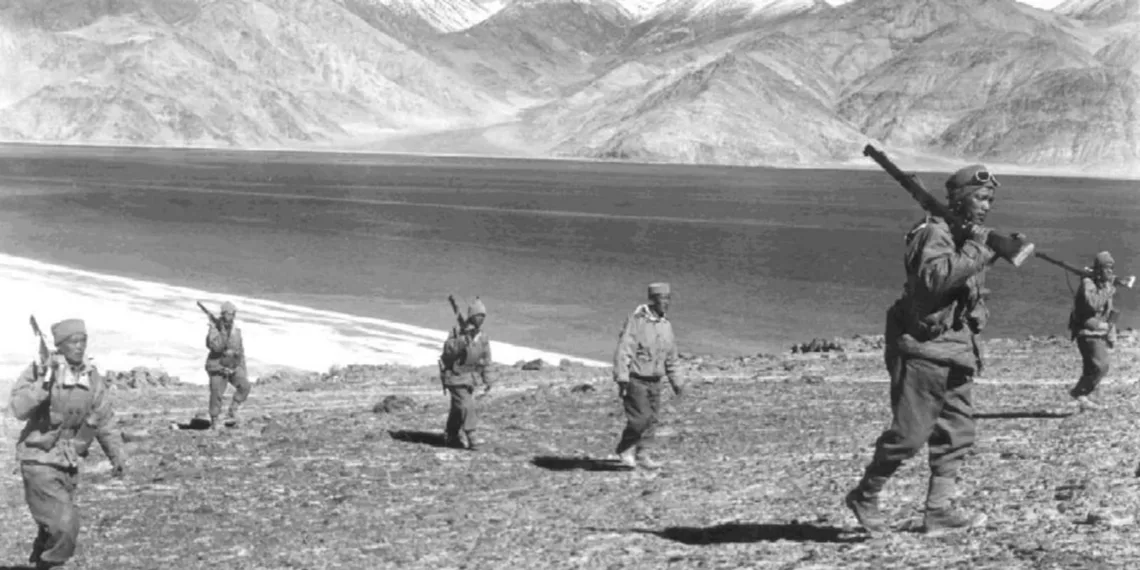Very few battles manage to get the distinction of becoming tide-turners in wars. In the annals of 1962 Sino-Indian War, as far as public memory goes, that distinction is belongs to the Battle of Rezang La in Ladakh, where some 120 Indian troops fought 3,000 Chinese personnel.
However, there is another such battle, often described as the “eastern Rezang La”, where the Indian Army, despite being outnumbered ten to one, fought with unmatched grit and professionalism. This was the forgotten Battle of Walong.
A remote outpost in Arunachal Pradesh (then Northeast Frontier Agency or NEFA), Walong became the setting for a moral victory, confirming that no matter what the adversity and who the adversary, Indian Army soldiers would not yield without a fight.
Walong: The Easternmost Battlefield
Nestled in the Lohit Valley near the tri-junction of India, China, and Myanmar, Walong was geographically isolated. That, at a time when India had not developed border infrastructure enough, made it a logistically very challenging post to defend.
The battle began on 22 October 1962, when PLA units began probing Indian positions across the Lohit River. Indian defenders, led by Brigadier N.C. Rawlley, included troops from 6 Kumaon regiment, 4 Sikh regiment, 3/3 Gorkha Rifles, 2/8 Gorkha Rifles and 4 Dogra.
In the face of the Chinese People’s Liberation Army’s (PLA’s) offensive with more than 4,000 soldiers, Indian troops held their ground with remarkable courage.
Although vastly outnumbered, lacking adequate artillery and air cover, and completely surrounded, Indian soldiers fought successive waves of Chinese attacks from Namyang to Dong and the Lohit Bridge. They leveraged the terrain and their training to hold off the PLA in close-quarters combat. Accounts from survivors speak of soldiers who fought until ammunition ran out and then used bayonets, stones, and sheer willpower.
Over the next fortnight, the defenders inflicted severe casualties on the PLA and delayed its advance far longer than expected. The forward defences held by some 800 men held back the Chinese forces for over 20 days. For the first time in the war, Chinese commanders faced determined resistance that challenged their assumptions of a swift and bloodless victory.
Met with exceptionally fierce battles, the Chinese Army was forced to commit their reserve Division of approximately 15,000 soldiers from Tawang Sector to Walong.
A Battle of Spirit, Not Numbers
By 16 November 1962, after exhausting their supplies, the Indian defenders were ordered to withdraw. But by then, they had already achieved something remarkable: they had stalled the PLA for almost a month, a feat unmatched in the eastern sector during that war.
Chinese reports themselves later admitted that Walong was “unexpectedly costly,” acknowledging the high toll inflicted by Indian resistance. It was, in many ways, the first psychological setback for the PLA in its campaign of aggression.
The Morale Effect: Courage Amid Betrayal
The impact of the courage that Indian soldiers showed in the Battle for Walong spread like wildfire through the ranks of the Indian Army. Walong’s defenders restored faith in the Army’s fighting spirit at a time when the nation was still reeling from the shock of betrayal after years of “Hindi-Chini Bhai Bhai” diplomacy.
Where the government had failed in terms of both strategy and logistics, it was the braveharts who fought at Walong who proved that professionalism, training, and morale could hold the line even in the harshest conditions. Their resistance became a rallying point for the Indian Army’s regeneration in the years that followed.
Indeed, many military historians argue that the Eastern Command’s renewed focus on mountain warfare readiness, seen in today’s formations, such as the IV Corps in Tezpur and the 3 Corps in Dimapur, finds its roots in lessons learned from Walong.
The battle underscored the need for local logistics, airlift capacity, and forward-operating bases, shaping India’s long-term defensive posture along the Line of Actual Control (LAC).
Commemoration and Legacy
Today, Walong holds a special place in Indian Army’s history. It is heralded as a symbol of unyielding resistance. Befittingly, each year, the Army commemorates the Battle of Walong at the Walong War Memorial, where the names of the fallen are inscribed in stone. The epitaph reads: “The sentinel of the east salutes their fallen comrades.”
For the local Arunachali population, the battle has become a part of their living heritage. It is a reminder that India’s unity and resolve extend to its remotest corners. Military units that served in Walong carry its legacy with pride, often describing it as the “eastern Rezang La,” a smaller, lesser-known yet equally heroic stand.
From 1962 to Today: Strength Born of Sacrifice
Walong’s lessons were instrumental in shaping India’s current strategic posture. The infrastructure buildup, from roads to airstrips to advanced logistics bases, shows how far India has come since 1962. Additionally, the Eastern Command, responsible for defending Arunachal Pradesh and the eastern front, is now among the most combat-ready theatres in the Indian Army.
Today’s Indian Army is no longer the lightly armed force of Walong. Backed by air mobility and joint-force doctrines, it fields mountain strike corps, integrated surveillance, and precision artillery. Most importantly, amid all this modernisation, the essence of Walong— the belief that morale and determination can stand against overwhelming odds— has also been preserved: .
A Victory for Morale
Although the Battle of Walong ended in tactical withdrawal, it was a triumph for India’s morale as it preserved the honour of the Indian soldier. It also shattered the perception of Chinese invincibility and even became the seed of the Army’s modern transformation.
Walong remains the forgotten front that proved one enduring truth: India may be surprised, but it will never be subdued. (JKNS)

